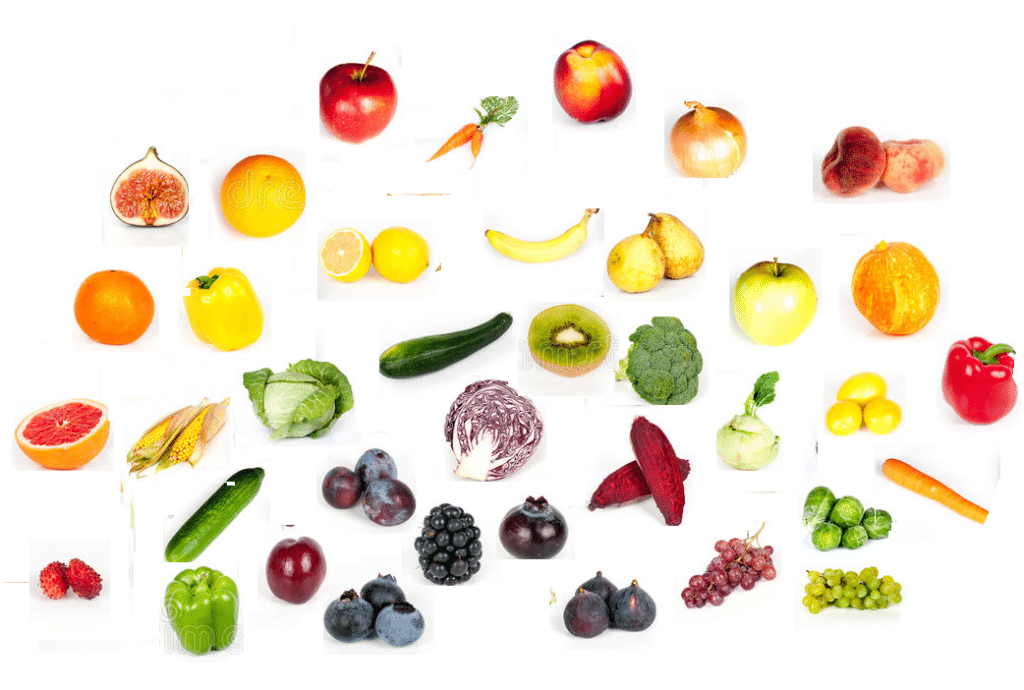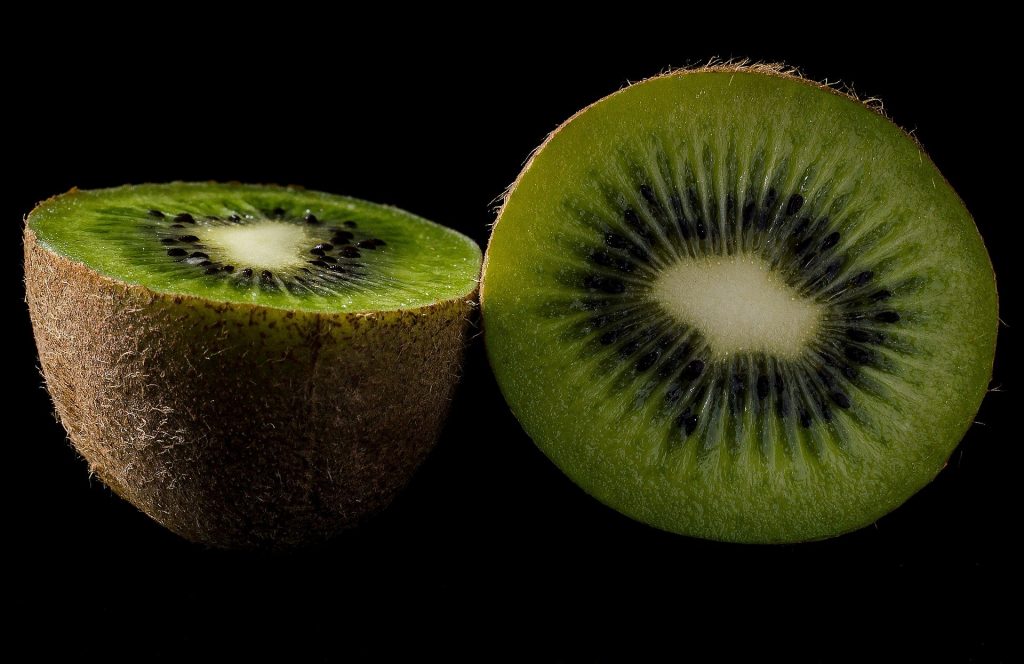[Article updated on 19/09/2023]
With autumn comes humidity and freshness and the need for softness and warmth is felt.
Autumn vegetables (squash, cabbage, etc.) and fruits (apples, pears, figs, pomegranates, etc.) will bring you the comfort of small, colorful stews that will delight your taste buds and provide you with plenty of vitamins to stay in shape, but very light.
Autumn fruits and vegetables, a rainbow on your plates and lots of virtues!
Favor seasonal fruits and vegetables: nature is well done, it offers us fruits and vegetables adapted to our body for each season, following changes in temperature and what’s more, they are tasty and less expensive!
For plates that flatter the eye and taste buds, try to put at least 3 on a plate for each meal!

Red
- the beets Cooked and red onions are very powerful antioxidants!
- pomegranates, plums, apples are tangy and full of vitamin C!
Orange
All rich in beta-carotene, iron, vitamin A, C, D, B2, B6, B9, C!
- cucurbits (pumpkin, squash, pumpkin…): are also rich in vitamin K and E, fiber, phosphorus, copper and manganese, which are excellent for our health… And the icing on the cake, they are low in calories! Its slightly sweet flavor makes it a great choice for getting children to eat vegetables. You can cook the different types of squash in soup, puree, pie, soufflé, cake (even sweet).
- the carrot is a very gentle food also rich in vitamin B1, B2, K, phosphorus and potassium. It prevents cardiovascular diseases, lung cancer and cataracts. It is eaten raw, cooked or in juice. It is an excellent anti-diarrheal!
- oranges : stimulate the body’s natural defenses, falling during temperature changes, there is nothing like the citrus : tangerine, grapefruit, clementine but alsoe kiwi, lemon are all very interesting fruits in autumn.
YELLOW
- corn and lemon are rich in beta-carotene, vitamins A, B, C and E.
- banana and pineapple are rich in magnesium and potassium and help fight stress, muscle contractures and gastroesophageal reflux.
- the pear is an excellent anti-inflammatory, it reduces the risk of type II diabetes. Its high copper and fiber content helps protect the heart and significantly reduce thyroid problems.
- Apple is rich in pectin, fiber, vitamins and antioxidants. It promotes good general health.
- Quince is rich in antioxidants and low in calories. It is delicious in jams and compotes. Also rich in fiber and thus facilitates transit.
White
- white grapes contain resveratrol, an antioxidant that has beneficial effects on the cardiovascular system. It is also rich in potassium, good for muscle contraction. Please note it contains sucrose, limit its consumption to 1 handful per day.
- garlic is a very powerful antioxidant.
- endive is rich in calcium, phosphorus and potassium.
- celeriac is a source of vitamin K which helps blood clotting. It is also a source of potassium.
- salsify contains a lot of vitamins (C, B1, B2, B5 and B6) and minerals, such as potassium, phosphorus, iron, copper, magnesium and manganese. It also contains inulin, a prebiotic which is not absorbed by the small intestine but which will be fermented by the bacterial flora of the large intestine. It therefore contributes to the development of good bacteria in the intestinal flora.
Green
- leeks allow the strengthening of our immune system, they have a protective effect against certain cancers, particularly of the stomach and intestine. The green part is rich in antioxidants, trace elements, vitamin C and fiber. White is richer in carbohydrates and fiber.
- artichoke, watercress, spinach and cucumber are rich in phosphorus, potassium, calcium, polyphenol (antioxidant) minerals and vitamins B9 which allows your body to benefit from good oxygenation, magnesium promotes the fight against stress and fatigue.
- fennel is rich in iron, potassium, vitamin E and magnesium and has calming properties for digestive disorders. It also helps fight cholesterol and vascular diseases. Very low in calories, it is eaten raw or slightly crunchy by steaming it for ten minutes. If you prefer it softer and more flavorful, make the braise.
- the leek is an important source of provitamins A (carotene), vitamins C and E, fiber and antioxidants. This vegetable is recognized for its diuretic benefits and its action against cardiovascular disorders.
- zucchini and chard are very rich in vitamin B9, A and potassium. They are rich in water and low in calories.
- cruciferous (Romanesco cabbage, cauliflower, broccoli, green cabbage, Brussels cabbage, Chinese cabbage) are low in calories and rich in phosphorus, potassium and calcium, vitamin B, fiber and proteins essential for the elimination of toxins in the body. They are also very appreciated for their slimming and draining properties.
- kiwi, mango and papaya are very rich in vitamin C and sources of antioxidants. They bring a touch of exoticism to your dessert! They also act against constipation, water retention, they help digestion and strengthen bones thanks to copper, magnesium and potassium.

Purple
- red cabbage and eggplant are rich in beta-carotene, phosphorus, calcium and potassium.
- blueberries, blackberries, figs, damson are rich in potassium, phosphorus, calcium, polyphenol, vitamin C and fiber.
Brown
- shallot very good antioxidant.
- hazelnuts and almonds are rich in potassium, magnesium, proteins and good quality fatty acids, they are perfect snacks to avoid mid-day fatigue. Be careful not to exceed a large handful per day.
- chestnuts : it is a fruit rich in minerals and trace elements. It has an interesting content of potassium, iron, magnesium and copper. It also contains fiber, monounsaturated fatty acids and vegetable proteins which are believed to reduce cardiovascular diseases. It is a low glycemic index carbohydrate and gluten-free. You can easily make a chestnut flour cake or serve them as a side dish.
- dates : Rich in fiber and carbohydrates, dates facilitate transit and provide energy. Consume in moderation due to their high sugar and calorie content.
- the mushrooms (boletus, sheep’s trotters, porcini mushrooms, coumelles, etc.) are low in calories, rich in nutrients and vitamins (B and D), they are the perfect accompaniment to flavor and enhance our dishes. Rich in selenium and antioxidants, they protect our cells from aging.
- Potato is a source of fiber, minerals and vitamins. In salad, baked or pureed… Be careful if you have an inflammatory area, remember to remove the skin to avoid aggravating your pain!
- the nut : Consumption of 10 grams of nuts per day reduces the risk of cancer, diabetes and neurodegenerative disease thanks to the fatty acids they contain.
- cinnamon: Rich in antioxidants, helps prevent many diseases, including cancer. It also has antiviral, antibacterial and hypoglycemic properties (helps regulate blood sugar levels in diabetics). Cinnamon is perfect for flavoring pastries, baked or stewed fruits, tea and others.

Black
- black radish very rich in antioxidants, potassium, phosphorus and calcium.
Choose hot dishes!
There’s nothing like a hot dish to warm you up!
In addition, autumn is a tiring season for everyone, you need to lighten the work on your digestive system by eating your vegetables cooked instead.
For small, light and tasty dishes, use cooking in a wok, in casseroles, in steam, in foil which allow rapid cooking while retaining the vitamins and flavors of your vegetables, which you can season with a drizzle of oil olive.
Finally, to give more flavor to your dishes and add vitamins… add aromatics (thyme, bay leaf, garlic, onions, shallots, etc.), spices (turmeric, cumin, black pepper, 4 spices, cinnamon, nail cloves…) which will slightly warm your taste buds) and/or a few seeds (squash, sunflower, flax, chia, sesame, poppy…) in your preparations!
Focus on fruit for a vitamin-packed, colorful and low-calorie dessert!
Fresh or hot (baked, in foil, pan-fried, compote, etc.) or fresh: classic (apple, pear, grape, etc.) or exotic (pineapple, pomegranate, kiwis, etc.), they will bring you a touch of sweetness, full of vitamins C, low energy but so necessary to fight infections and cooling!
So on the menu, unlimited vegetables and 3 portions of fruit per day, for a vitamin-packed, gentle and light autumn!
